I’m on a quest to catch a fish in each of the 50 U.S. states – and to use each adventure as a means to explore conservation, the latest fisheries research and our complicated connections to the natural world.
I grasp one end of the canoe, sweat already beading on my forehead on this humid morning. Steve Sammons has the other end of the canoe. Between us is a near-vertical stretch of rock. I hear Steve muttering profanities as we attempt to get the canoe into water.
He pauses for a second. “Don’t worry, this is the hardest part,” he says. “Well, except for getting it back out. But it’s worth it.”
After some grunting and a few more expletives, we launch the canoe and paddle down this languid northern Georgia River, a tributary of the Chattahoochee.
Occasionally, feeding fish break the surface of the languid river, likely redbreast sunfish. I’m tempted to cast. Sammons seems to read my thoughts. “Not here,” he says. “It’s too calm. For these fish, we’re looking for the fastest water you can find.”
The fish he’s referring to is the shoal bass, a native black bass species native only to the Apalachicola River drainage, including tributaries like the Flint and Chattahoochee rivers. Like many native bass species in the Southeast United States, the shoal bass faces some serious threats. There’s hope in that it also has a new legion of fans who appreciate the fish and its unique habits and habitat.

Sammons, a research scientist at Auburn University, is the perfect person to introduce me to these fish. Often called “Dr. Shoalie” by fellow researchers, anglers and conservationists, he’s spent a good chunk of his career researching and understanding these fish. He’s also an enthusiastic angler.
We paddle along this lazy river, but soon I begin to hear the dull roar of running water. A waterfall.
“That’s where we’re fishing,” Sammons explains. “We’re going to throw finesse fishing out the window. We’re going to be fishing in the waterfall.”
I’ve spent the past several days fly fishing for 3 species of native redeye bass in Georgia and Alabama. This pursuit reminded me more of native trout fishing than bass fishing. We stealthily hiked into little streams carrying 3-weight fly rods and cast foam poppers to 8-inch fish.
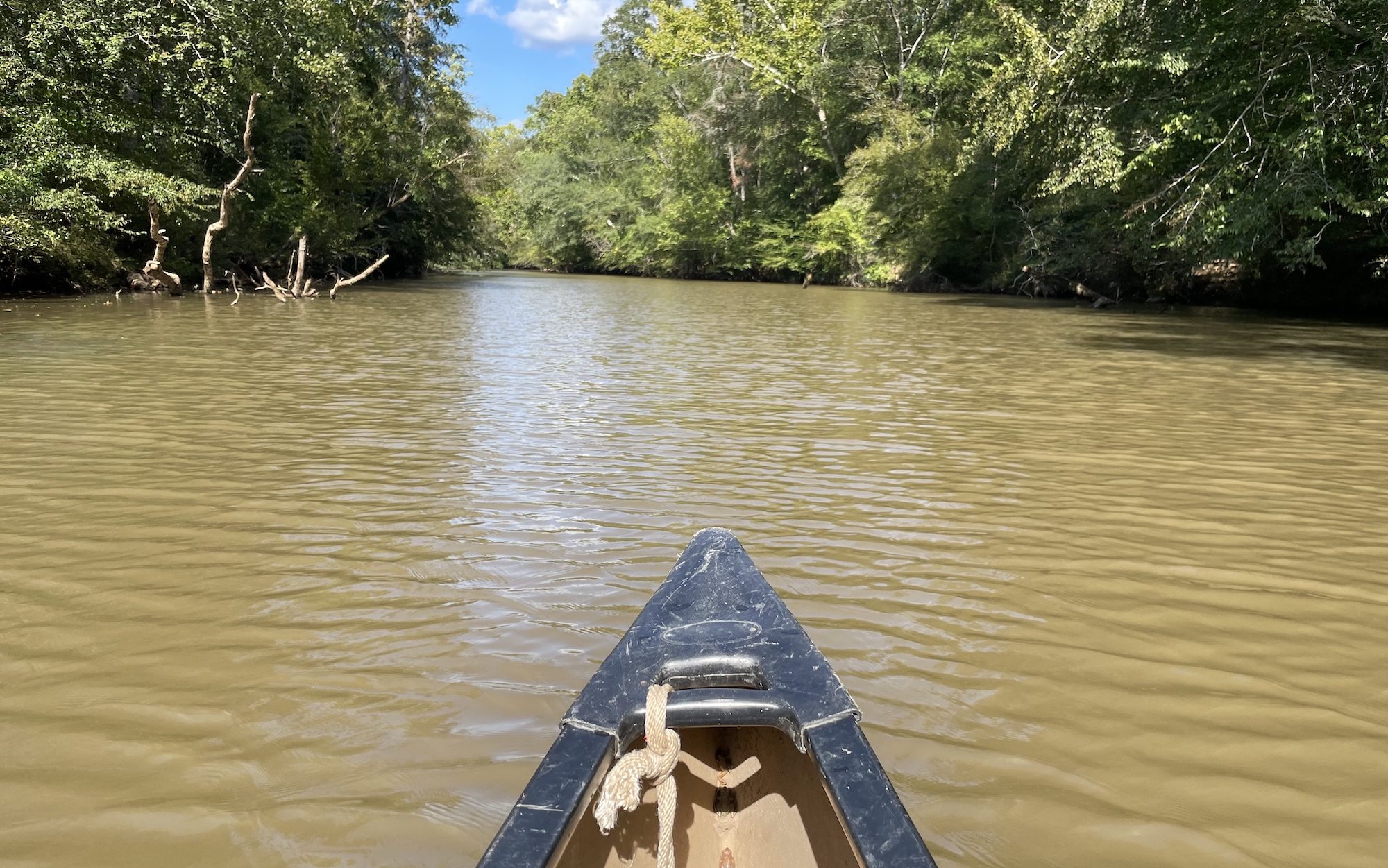
Today would be different. Shoal bass can reach 8 pounds or more. There’s nothing subtle about them. We’d be using the typical bass gear – big lures called spinnerbaits and Senko worms – that I typically associate with tournament angling. But we weren’t in a reservoir. We pulled the canoe to slack water at the top of the waterfall.
A peer over the edge reveals the waterfall to be a series of rapids, almost like steps, allowing us to climb and fish the white water: a unique environment to catch a bass.
It doesn’t take long. Sammons quickly hauled in a bass on a plastic worm he cast. I cast out the spinnerbait, a lure with a metal blade, plastic worm tail and a skirt of chartreuse and white. I am not familiar with all the lures and gizmos of hard-core bass angling, but it doesn’t matter. On my fifth cast, I feel a thump at the end of my line and am hard to a fish. My first shoal bass, a fish that has already disappeared from large parts of its original range. They disappeared before most even knew they were there.

Death by 1,000 Cuts
Sammons began his research – and his fishing – as a self-described “pond and reservoir guy.” His work focused on the largemouth bass that rank as arguably the most popular sport fish in the United States, if not the world.
But there are other native basses, and it’s only been in recent decades that most fisheries managers paid them any mind. In 2005, the Alabama Department of Natural Resources reached out to Sammons’s advisor on a shoal bass research project; no one had done a survey on them.
They found that the shoal bass were largely extirpated from Alabama, gone before they could be studied. In other river systems, they found that introduced Alabama bass and spotted bass had replaced shoal bass in many areas.
“You could say it was a crisis that got me into native black bass,” Sammons says. “I had never done work on rivers in my life. The first thing you ask as a researcher is, ‘what do we know about shoal bass?’ The answer was, basically, nothing.”
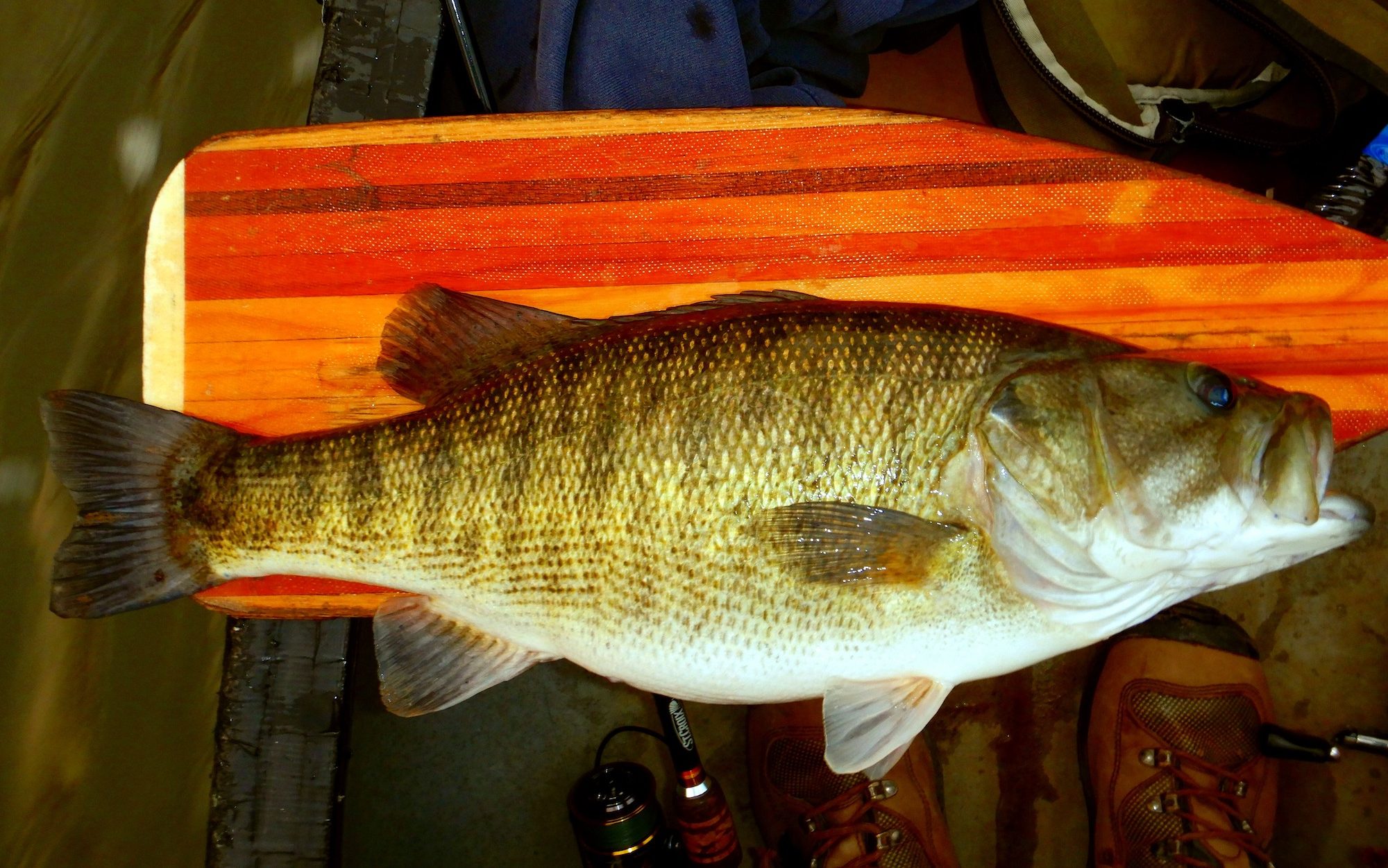
So Sammons and other researchers went to work on the problem, first seeking to better understand the fish and assess the treat of introduced bass. They used telemetry to gain an understanding of fish movement and habitat use. They studied food habits, hatching timing, growth of juveniles, and age/mortality of adults.
“Sometimes you get lucky,” says Sammons. “We got really good data that highlighted just how different shoal bass were from other black basses. It just ballooned from there.”
The research gave Sammons an appreciation for these fish. But in many river systems, the situation looked gloomy, at best, for shoal bass.
“It’s a fish suffering a death by 1,000 cuts,” says Sammons.
The rapids we’re fishing? That’s a clue to what shoal bass need, and also why they’re in decline. The shoal bass’s scientific name – Micropterus cataractae – literally means “bass of the waterfalls.” They need swift, running water to survive. Some river bass, like the smallmouth, will adapt to reservoirs. Not the shoal bass.

As the Apalachicola River system was dammed, shoal bass disappeared from the slower waters. “If you create a reservoir, it disappears,” says Sammons. “We cut up their main river with a bunch of dams. If you think of these bass like you do salmon, you’re in the right frame of mind.”
Water pollution, especially prior to the Clean Water Act, also played a role. “A lot of the current shoal bass story was written before they were described as a species or anyone even started looking for them,” Sammons says.
Shoal bass continue to thrive on large sections of Georgia’s Flint River, a river where The Nature Conservancy has worked to protect for decades. TNC continues to play a role on the river, working with farmers who voluntarily suspend irrigation during drought periods, continuing to provide sufficient flows in the river. The project also is introducing “smart irrigation” technology rather than broadcast irrigation.
In other rivers, shoal bass struggle. The Chattahoochee basin, once a stronghold for the species, now has only 7 viable subpopulations (including the tributary we are fishing). Not surprisingly, this river is one of the most altered systems in Georgia. The upper portion flows directly through Atlanta. Also, 14 dams were constructed along the 430-mile river, further altering the system into a series of reservoirs, often with little to no natural river in between.
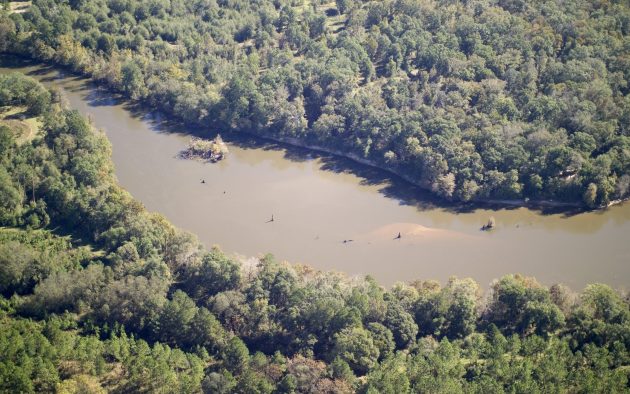
And to these large threats, add introductions of non-native bass. Some of these were authorized introductions, made before anyone really studied the native basses. But some recreational anglers continue to move non-native bass around.
In healthy, wild systems, shoal bass are better able to withstand threats by non-native Alabama bass and spotted bass. But in altered systems like the Chattahoochee, the non-native bass add to the threat. They outcompete and hybridize with the shoal bass.
“If I’ve done anything, it’s to shine a spotlight on the effects of non-native bass on these fish,” says Sammons.
In my fishing travels, it can get depressing in just how many waters non-native gamefish are a significant threat to freshwater biodiversity. And even more depressing, how many otherwise thoughtful anglers still don’t recognize the threat, continuing to claim that native fish conservation is going “too far,” despite lacking any evidence.
But if anglers can contribute to the decline of native fishes, they also may be the best hope imperiled species have.
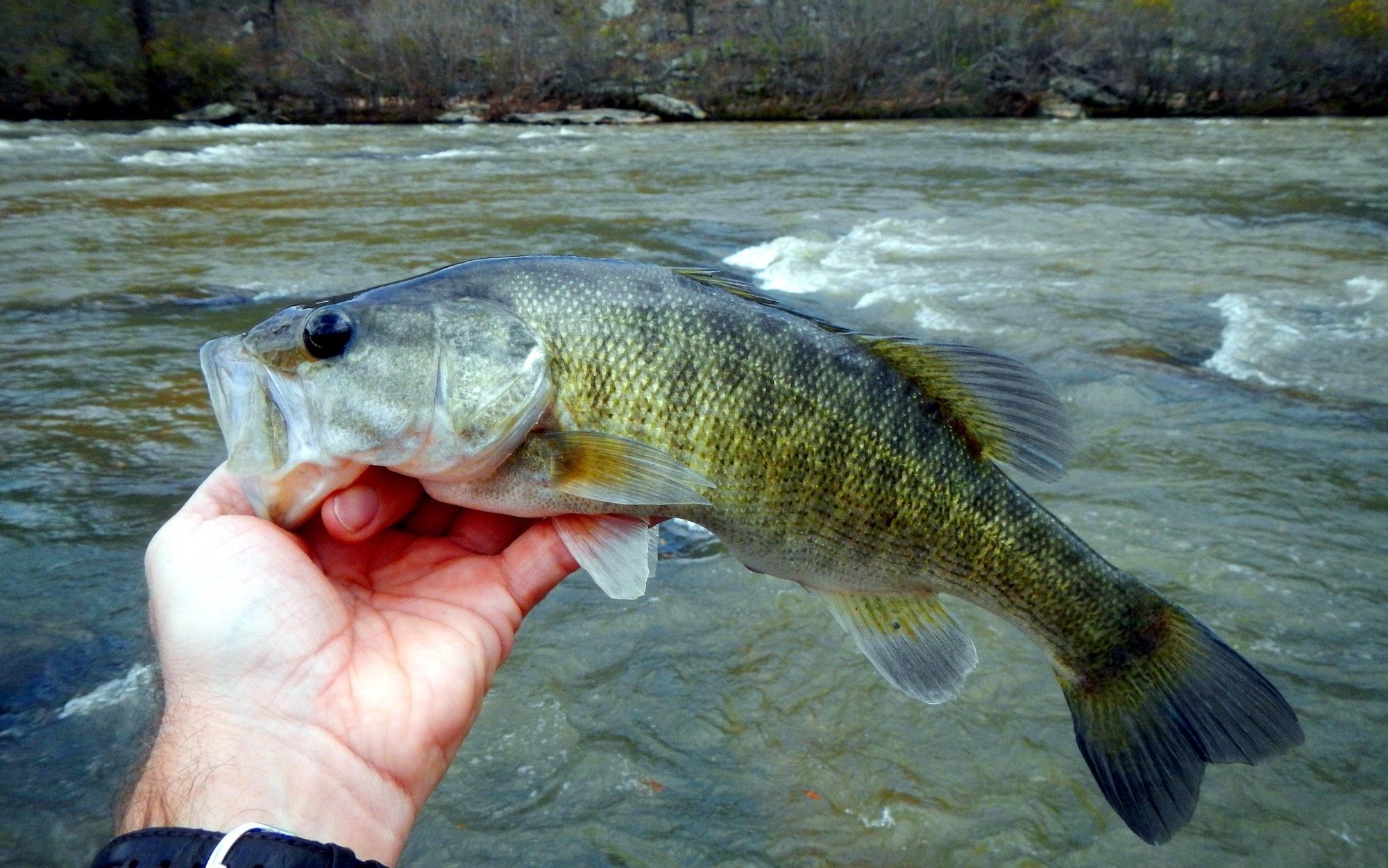
The Badass Bass of the Southeast
The shoal bass project didn’t only change Sammons’s research focus, it also changed his approach to fishing. “Once I started fishing for them, there was no going back,” he says. “They are just such cool fish. I like the fact that you can go wade fishing and catch a 5-pound bass. These fish are absolutely fearless.”
His enthusiasm is infectious. By the time of our shoal bass outing, I’d also fished with Sammons for Altamaha and Chattahoochee bass. With his knowledge and love of freshwater fishes, running water and conservation, we became fast friends. He had a clear passion for science – so much so that it cut into his fishing time – but also didn’t take himself too seriously.
Sammons humored me by taking me fly fishing for redeye bass, but it was clear that the shoal bass was his favorite. “This isn’t the place for small flies,” he says. “This is a bass that is such a badass that you have to throw the biggest thing in your tacklebox or you’re going to miss out on the larger ones. I’ve cast an 8-inch lure at them and even 10-inch fish hammer it. Un-freaking-believable. They are absolutely fearless.”
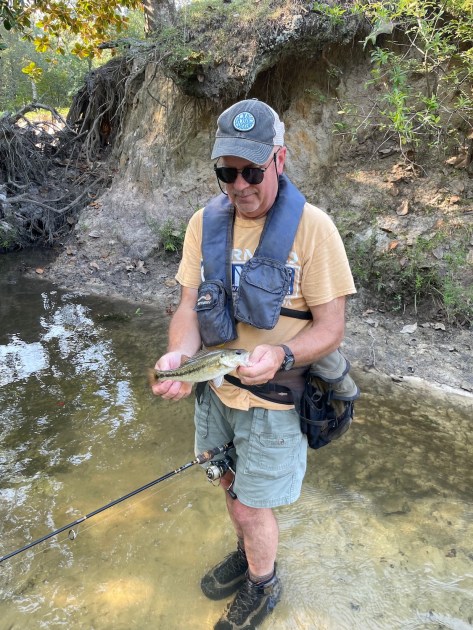
We aren’t after the trophy fish today, but still cast lures into frothing, boiling water as it spills over the falls. We pick our way down and investigate every bit of water. And we catch fish: bass boiling out of the whitewater to hammer our lures with abandon.
Perhaps best of all is the scenery. There are no other anglers around. I’m lucky to have this interesting bass fishing experience, but many anglers continue to move Alabama bass from one river system to the next. Why turn every river into the same story?
Luckily, the appreciation for shoal bass grows. “The serious shoal bass anglers are a tight-knit group,” Sammons says. “They have embraced the science. I’ve done two different tagging projects and when an angler calls in a tag, it is always so impressive the level of conservation knowledge they have.”
Sammons continues to speaking to anglers and conservationists, telling the story of these fish. He also encourages anglers to keep non-native bass to eat, and of course to never spread fish around. “I think more are recognizing that these are cool fish found in really cool places,” he says. “I see that there’s an increasing appreciation and enthusiasm for native black basses. I think once you experience fishing for them, it’s easy to see why.”




Great article. Dr. Shoalie sounds like a great conservationist. Another fish added to the tally for your quest. That fishes habits and habitat would definitely have been a draw to me in my fishing days.
Matthew! Is was good to meet you and I’m glad we got to spend some time chasing Tallapoosa Redeye Bass!
Rowell,
Thanks for dropping by. That was a great day. You will be in the next installment of 50 Fish, on redeye bass!
Cheers,
Matt
“Why turn every river into the same story” -So true.
Thanks for an amazing story about a fish I never knew existed.